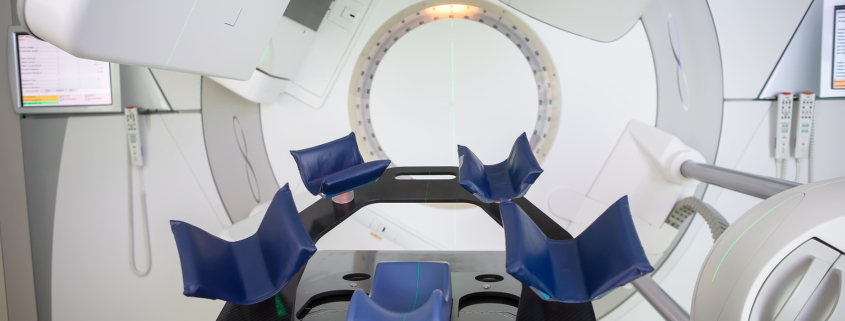What Is Heterotopic Ossification And Can Radiotherapy Help?
The versatility of specialist radiotherapy treatment means that whilst it is primarily associated with cancer care, it can and has been widely used to treat a wide range of benign and non-malignant diseases.
A particularly unusual but vital example of this is that radiotherapy can be used to help treat people affected by heterotopic ossification, a condition which causes bone to grow in tissue and parts of the body where it is not meant to.
It is relatively uncommon and even less common for it to be substantial enough to cause problems, but it is a condition that radiotherapy can help with as part of a complete course of treatment.
Here are the causes of heterotopic ossification, how it is diagnosed and how radiotherapy can help treat it.
What Causes Heterotopic Ossification?
Heterotopic ossification can be either a separate condition or a symptom of another disease or injury. These are typically classified as genetic and nongenetic, and the former is significantly rarer than the latter.
Genetic heterotopic ossification is any bone growth in soft tissue that is caused by a genetic condition such as progressive osseous heteroplasia, where extra bone develops inside skin, tissue, muscles and other deep tissue where bone should not form.
Another genetic condition, fibrodysplasia ossificans progressiva, is extremely rare, and causes the body to repair minor damage such as bruising or cuts by developing bone instead.
Outside of rare genetic disorders, more localised forms of heterotopic ossification can sometimes occur following traumatic injury, fractures, amputation or major surgery such as hip or joint replacement.
In these cases, following significant damage to the bone, some abnormal bone growth can sometimes occur, causing swelling, tenderness and pain around the fragments of bone.
Whilst still relatively uncommon, it is most commonly a side-effect of joint replacement surgery, where the bone will grow around the metal plates or joints.
When Does It Need Treating?
Much like the relatively similar bone spurs, nongenetic heterotopic ossification typically only needs treatment if it is causing issues with pain or movement, such as by creating painful swellings or forming around a joint to restrain movement.
In the case of fibrodysplasia ossificans progressiva, many treatments that would be used for nongenetic ossification are typically not recommended, as the typical healing process for surgery and other similar treatments would lead to further bone growth and progression.
Typically, a treatment plan for heterotopic ossification will be formed following examination from a specialist in consultation with a multidisciplinary team, using a range of scans and tests to determine the cause and ensure that treatment would be the best course of action.
How Is Heterotopic Ossification Treated?
In some cases it is not treated at all, if the amount of unexpected bone growth is small, there is little risk of progression and it is not causing any problems, it may be possible that no treatment is recommended.
Outside of this, heterotopic ossification often requires tailored treatments based on how the bone forms and the cause of the ossification, in order to avoid any potential future issues as much as possible.
At the lowest level of progression and risk, a doctor may prescribe physical therapy or pain relievers, which help to relieve inflammation, manage pain and increase the range of motions around joints.
Some nonsteroidal anti-inflammatory drugs can stop bone cells from being formed, which can be effective at preventing significant further growth, as can the use of the blood thinner warfarin in some limited incidences as it can reduce the effectiveness of vitamin K.
In some cases, where there is a concern about progression, corticosteroids may also be prescribed to slow down the rate of bone growth, and this is part of the typical course of treatment for genetically progressive forms of the condition.
Radiotherapy treatment can also be undertaken as a form of preventative treatment following surgery that risks the formation of heterotopic ossification in order to stop additional and unwanted bone growth.
In more severe cases where the quality of a person’s life is being significantly affected by the additional bone growth, surgery to remove the excess bone can sometimes be recommended, typically in combination with radiotherapy to stop it from growing back.
This is typically seen as a treatment of last resort, is not recommended for progressive genetic form of bone growth and is typically only undertaken if there are no alternatives, following the maturation of the bone.
If surgery is performed too quickly, then the bone will keep growing, undermining the surgery and often requiring an additional procedure and extending recovery time.


